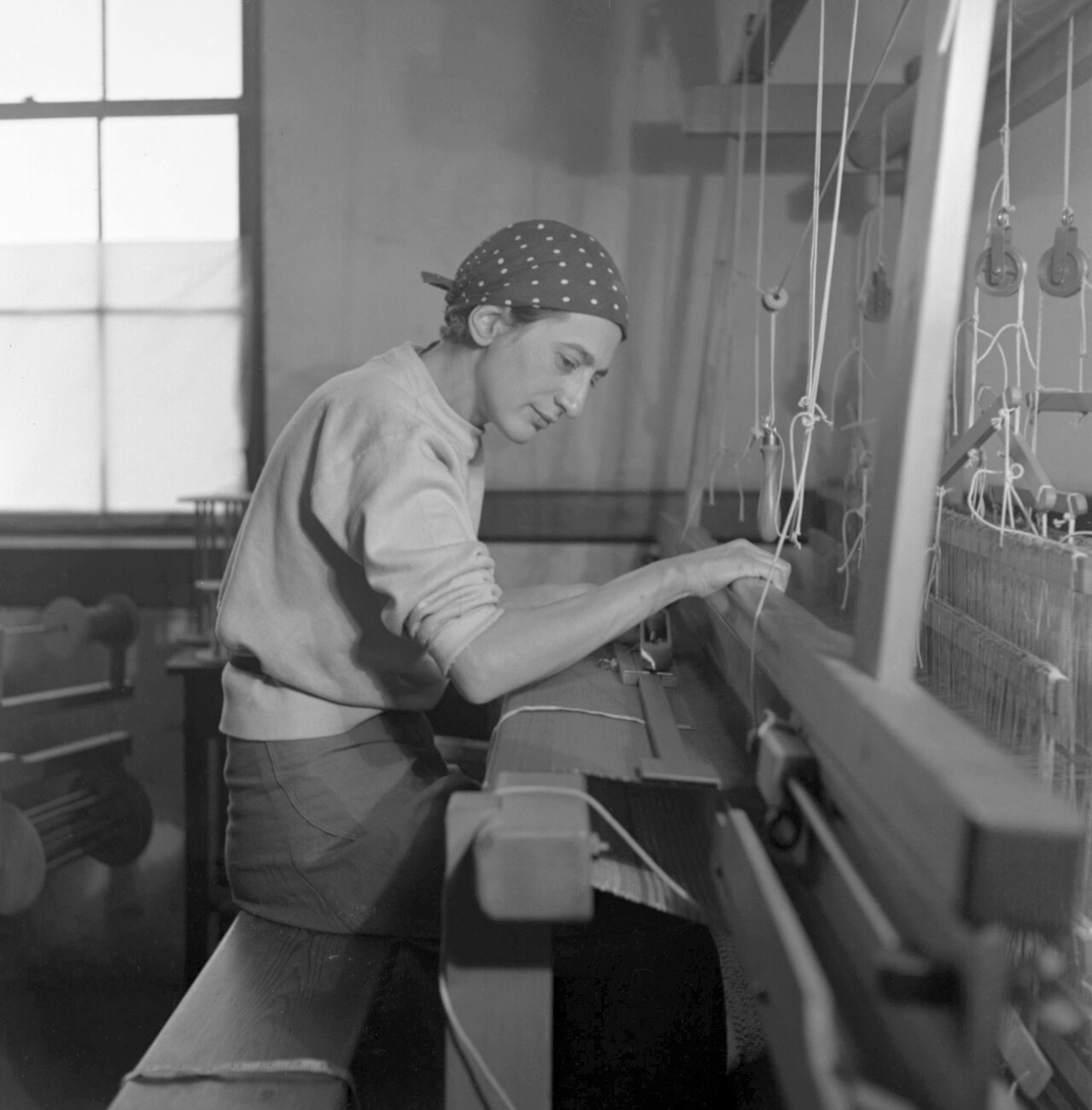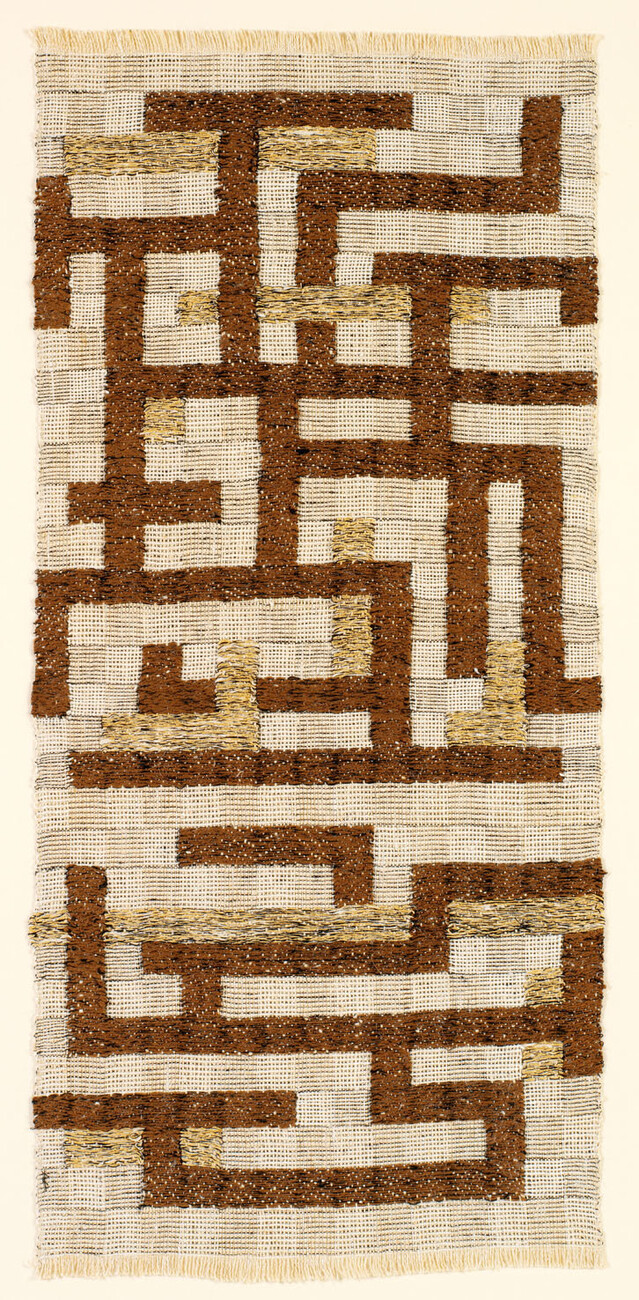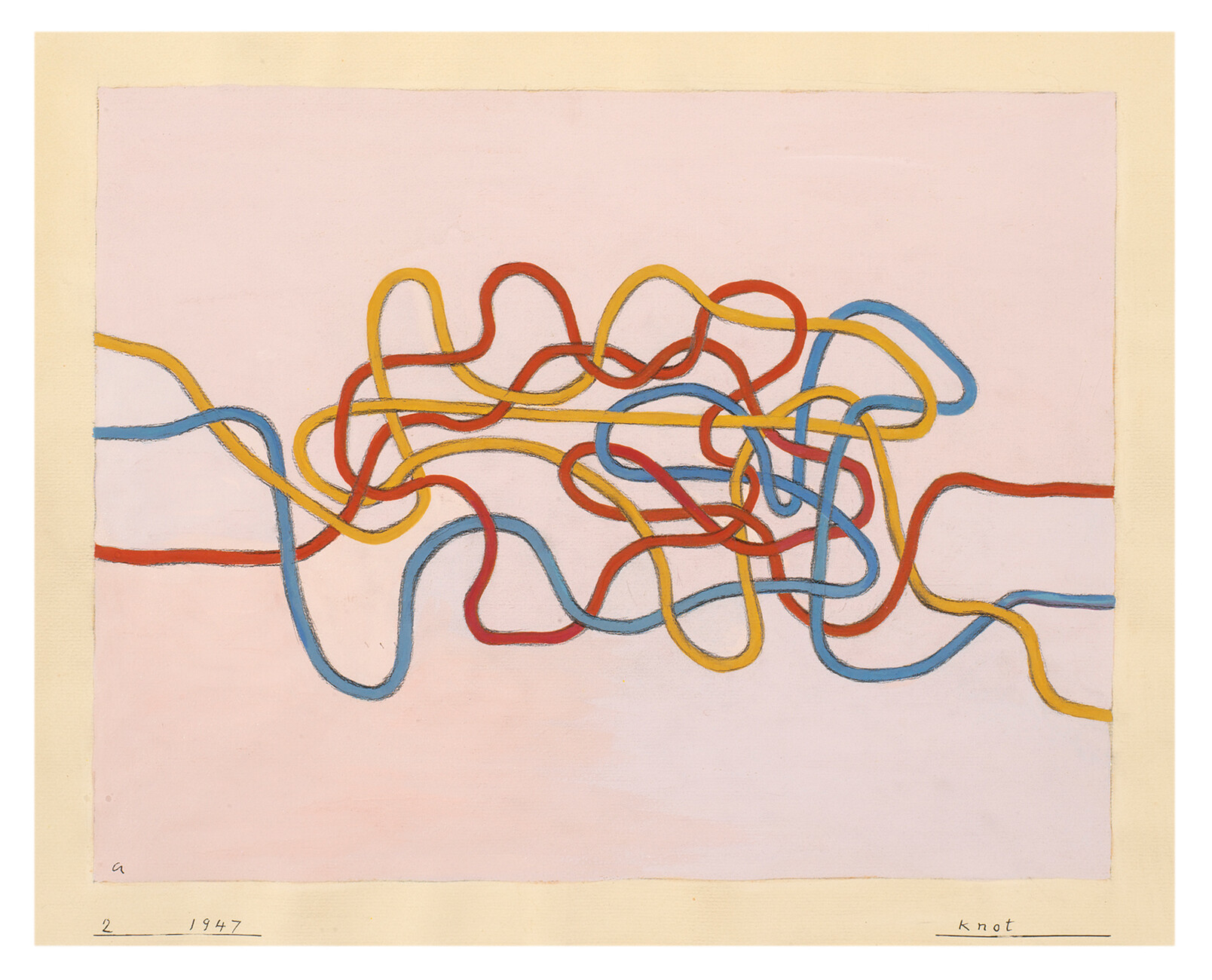The revolutionary
White, silver and black lines of differing lengths wriggle abstractly across a beige background, heading in all directions, only to end suddenly: “Six Prayers” is the name given to this work by its creator Annelise Fleischmann (1899-1994), who after marrying Josef Albers adopted his surname. The chaos of the lines, their hectic-seeming trajectories and their abrupt ends are a reference to the Nazi genocide and the hopeless predicament of the millions of victims – a Holocaust memorial in six panels. The handwoven work, which is made of cotton, linen, raffia and metal yarn is part of the current solo exhibition dedicated to “Anni Albers” at K20 in Düsseldorf. There are many reasons why this first retrospective of the artist’s oeuvre for a good two decades is such an important event: The textile work “Six Prayers”, which measures almost two by three meters, is extremely delicate and can therefore only be exhibited very rarely. It is one of the most important works by Albers, who moved to the Bauhaus School in Weimar in 1922 to continue her artistic studies. Sadly though, the school was not so progressive in terms of gender policy, despite the outward image of equality presented by its director Walter Gropius. Unlike the male students, women were not able to choose their subjects freely, and were only permitted to study textiles. Albers, who actually wanted to be a painter, was thus denied the opportunity to produce her work on canvas.
Anni Albers had to submit to the constraints of her time, but as a consequence managed to combine her artistic talent with the craft of weaving in a unique way. Driven by the determination to see her work accepted as art, she was inspired by the works of Paul Klee and Wassily Kandinsky, and began to experiment with textures, colors and surface qualities. For her, the versatility of the material became an opportunity to move the traditional craft of weaving into the modern-day context. It was thus no longer possible to simply pigeonhole her textile works as decoration or functional fabrics. With her woven images, the so-called “Pictorial Weavings”, she perfected the craft and developed a form of abstraction, which didn’t need a specific purpose to be meaningful and which both fostered and demanded new ways of seeing.
With a good 300 works on display, the K20 exhibition provides a comprehensive overview of the works of Anni Albers. In doing so, it also offers an insight into the artist’s second creative phase, during which she focused on printing techniques. It was thanks to them that she ultimately gained the recognition largely denied her woven works during her lifetime.
Annie Albers
K20 Kunstsammlung North Rhine-Westphalia
Grabbeplatz 5
40213 Düsseldorf
Opening times: Tuesday to Friday 10.00 a.m. to 6.00 p.m.
Saturday, Sunday, public holidays 11.00 a.m. to 6.00 p.m.
Until September 9, 2018

















